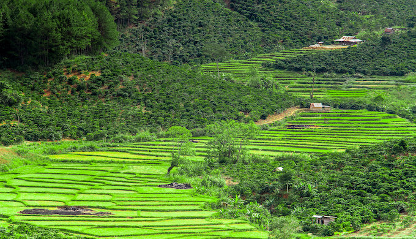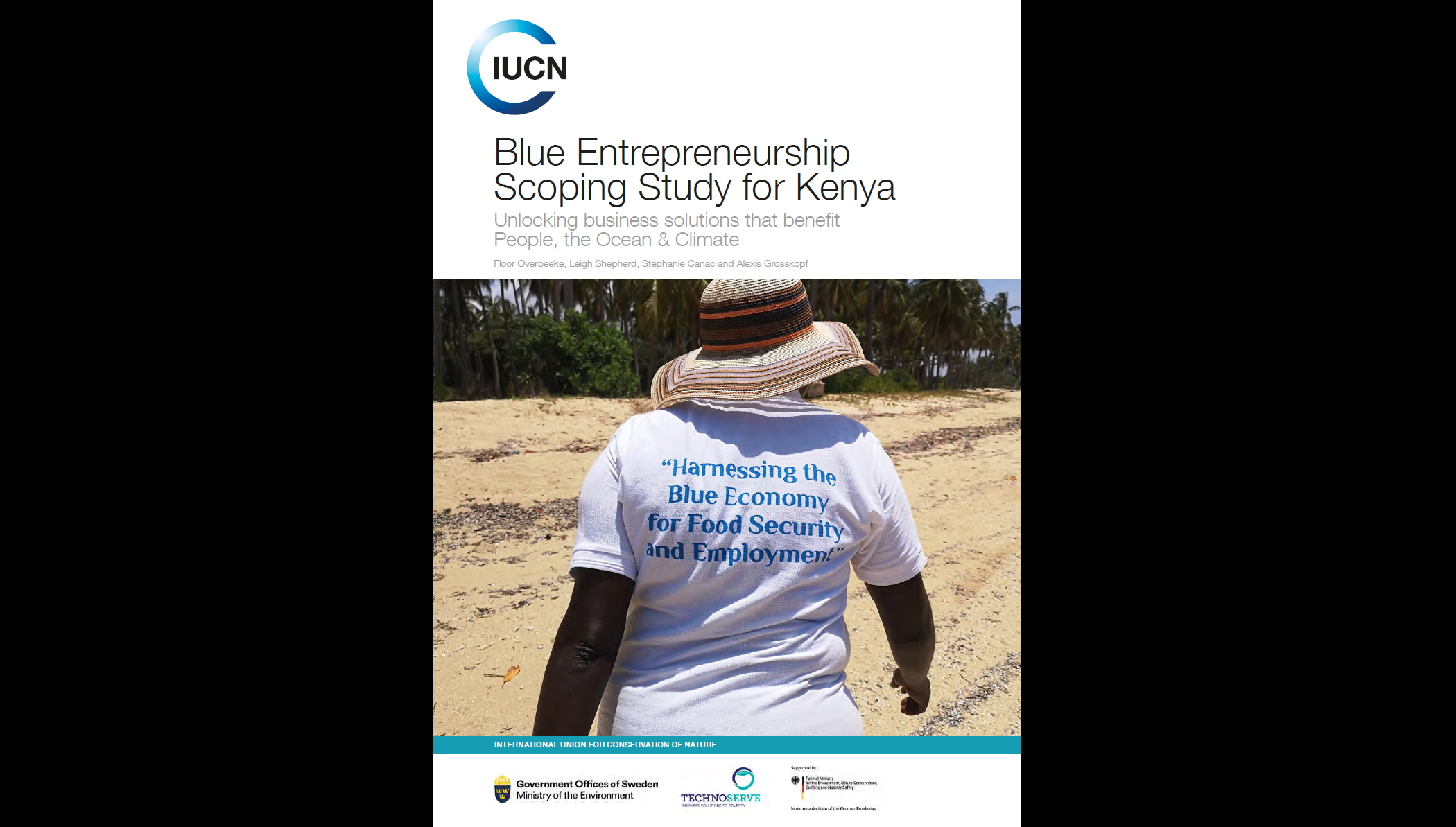FAO Publishes Legal Guide on Land Consolidation for Sustainable Rural Development
By Mohamed Ali Mekouar - This legal guide provides detailed direction on legal issues regarding land consolidation, a regulated procedure used to adjust the property structure in rural areas through a comprehensive reallocation of parcels among landowners and other right holders, so as to reduce land fragmentation, facilitate farm enlargement or achieve other public objectives, such as construction of infrastructure and nature restoration.

Photo: Mohamed Ali Mekouar
Legal guide on land consolidation based on regulatory practices in Europe was recently published in 2020 as FAO Legal Guide No. 3. Authored for the FAO Development Law Service by Tomas Veršinskas, Margret Vidar, Morten Hartvigsen, Kristina Mitic Arsova, Frank van Holst and Maxim Gorgan, it provides detailed guidance on land consolidation legislative issues in rural areas. Although primarily meant to assist countries wishing to develop a new legislative framework for land consolidation, the guide is also intended to help reform existing legal instruments.
Land consolidation is a management tool aimed to improve the structure of holdings and farms to increase their efficiency, while bringing benefits to right holders and society in general. It is defined in the guide “a legally regulated procedure led by a public authority and used to adjust the property structure in rural areas through a comprehensive reallocation of parcels, coordinated between landowners and users in order to reduce land fragmentation, facilitate farm enlargement and/or achieve other public objectives, including nature restoration and construction of infrastructure.”1
FAO has been involved in land consolidation since the 1950s, with a renewed focus on Eastern Europe and Central Asia in the 1990s, where land reforms resulted in widespread land fragmentation. Drawing on FAO’s experience, the guide builds on land consolidation legislative practices in Denmark, Finland, Germany, Lithuania, the Netherlands, Serbia, Spain and Turkey. It also aligns with the 2012 FAO-sponsored Voluntary Guidelines on the Responsible Governance of Tenure of Land, Fisheries and Forests in the Context of National Food Security, which include a specific section on land consolidation requiring that environmental safeguards “be established to prevent or minimize degradation and loss of biodiversity and reward changes that foster good land management, best practices and reclamation.”
Land consolidation is a constantly evolving tool, which must be respectful of human rights, tenure rights and the environment. It may also contribute to achieving the 2030 Sustainable Development Goals, in particular rural land-related targets, including: (i) target 2.3 of doubling “the agricultural productivity and the incomes of small-scale food producers”; (ii) target 1.4 to ensure that all men and women have equal rights to “ownership and control over land”; (iii) target 5.a to undertake reforms giving women “access to ownership and control over land”; (iv) target 15.1 of ensuring the “conservation, restoration and sustainable use of terrestrial and inland freshwater ecosystems”; and (v) target 15.3 to “combat desertification, restore degraded land and soil”.
The guide is structured around the three phases of a land consolidation project, namely: the feasibility phase, the re-allotment phase, and the registration and implementation phase. Each land consolidation issue is first presented in general terms. This outline is then illustrated by relevant country practices. Subsequently, examples of legislative wording are provided in text boxes. Finally, key recommendations on each issue are captured in dedicated boxes.
The guide is subdivided into 11 chapters, covering matters and making recommendations that may be summarized as follows:
-
Introduction to the guide: overall description, including objectives, scope, methodology and target audience;
-
Overview of land consolidation: presentation of its key features, including definitions, approaches and phases;
-
Objectives and principles: (i) land consolidation objectives should be defined broadly, reflecting multi-purpose approaches that go beyond the reduction of land fragmentation and address agricultural purposes and other relevant objectives related to infrastructure, environmental management and socio-economic development; (ii) land consolidation principles include: respect for and protection of legitimate tenure rights; economic, social and environmental sustainability; gender equality; transparency, consultation and inclusiveness;
-
Institutions and stakeholders: (i) a public lead institution should have overall responsibility for land consolidation policies, programmes and projects, while outsourcing certain tasks to private contractors; (ii) interests of non-registered right holders, such as farmers’ and women’s groups, should be considered in consolidation projects; (iii) public meetings open to all stakeholders should be dedicated to the feasibility and re-allotment phases;
-
Feasibility phase: (i) persons and entities entitled to apply for land consolidation projects should be specified, and criteria for assessing their requests should be established; (ii) public meetings about the projects should be held with potential stakeholders; (iii) a feasibility study report should include recommendations about the: overall feasibility of the project, suggested consolidation approach, envisaged agricultural infrastructure, negative environmental impacts and measures to compensate for them;
-
Re-allotment phase: (i) the land consolidation project area should be defined by the lead institution; (ii) parcels within this area should be temporary notated in the land registry; (iii) re-allotment planning consultations and negotiations should be conducted with landowners and other right holders; (iv) parcels in consolidation projects should be valued based on predefined valuation criteria; (v) principles for re-allotment planning should be established for the development of land consolidation plans; (vi) environmental screening should be performed before approval of such plans to ensure that their implementation will not have negative environmental impacts;
-
Registration and implementation phase: (i) cadastral surveying should be conducted when boundaries change; (ii) the land consolidation plan should be the sole basis for registration of landownership and other tenure rights resulting from the consolidation project; (ii) the lead institution should be responsible for the transfer of possession of new parcels; (iii) there should be a financial settlement mechanism for under- and over-allocations of land;
-
Monitoring and evaluation: (i) the lead institution should perform regular monitoring of consolidation projects to assess whether planned outputs were achieved and to capture lessons learned for future adjustments; (ii) every four to five years, a thorough evaluation of the national land consolidation programme should be conducted;
-
Legal remedies: (i) legal safeguards of the land consolidation process should be available, including administrative remedies and judicial review; (ii) legal remedies should not hinder the smooth realization of consolidation projects, nor unnecessarily suspend their implementation;
-
Consolidation and banking: land banking should be used in combination with land consolidation to increase land mobility, facilitate farm enlargement and compensate landowners in land instead of monetary payment when agricultural land is taken out of production for public projects;
-
Global perspectives: (i) while manly intended for countries in Europe and Central Asia, the guide will be relevant in other regions as well, including Africa and Asia; (ii) globally, a world overview of consolidation programmes should be carried out for cross-regional exchange of experiences on consolidation practices and legislation; (iii) land consolidation may also be developed where multi-purpose land management instruments are needed to adjust land use for larger numbers of right holders and for area-demanding projects, such as construction of infrastructure, nature restoration, environmental protection, climate change adaptation and mitigation.
1Veršinskas, T., Vidar, M., Hartvigsen, M., Mitic Arsova, K., van Holst, F. and Gorgan, M. 2020. Legal guide on land consolidation: Based on regulatory practices in Europe. FAO Legal Guide, No. 3. Rome, FAO.
About the Author
 Photo: Ali Mekouar
Photo: Ali Mekouar



